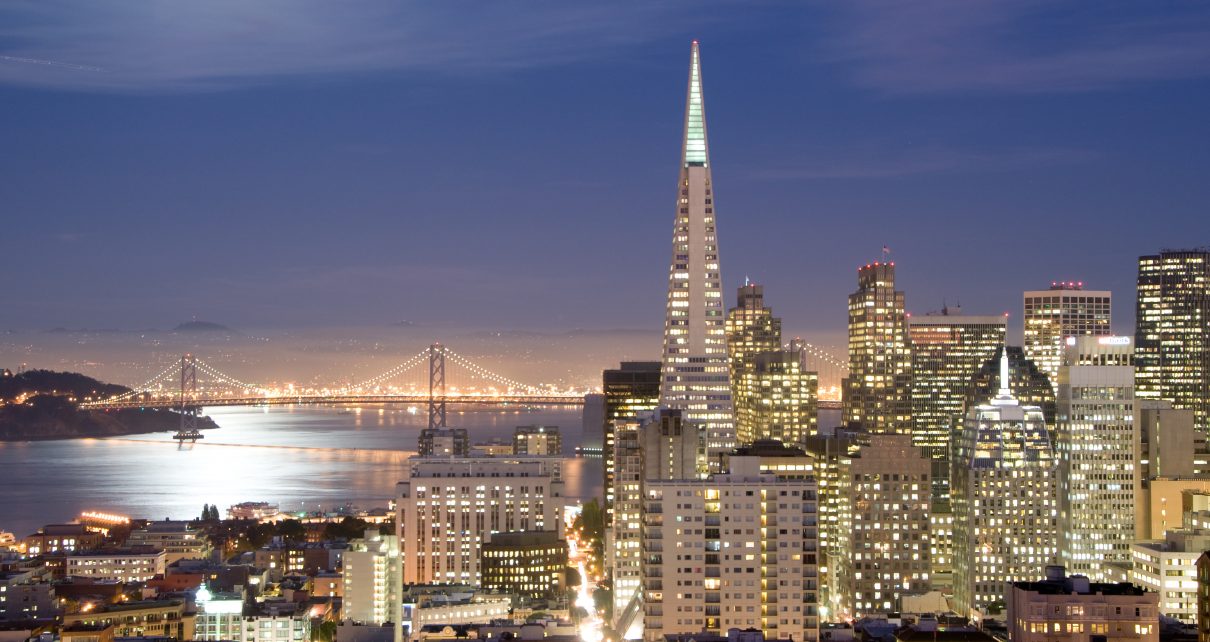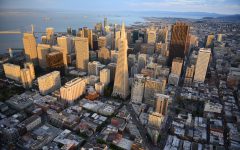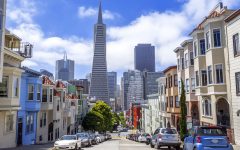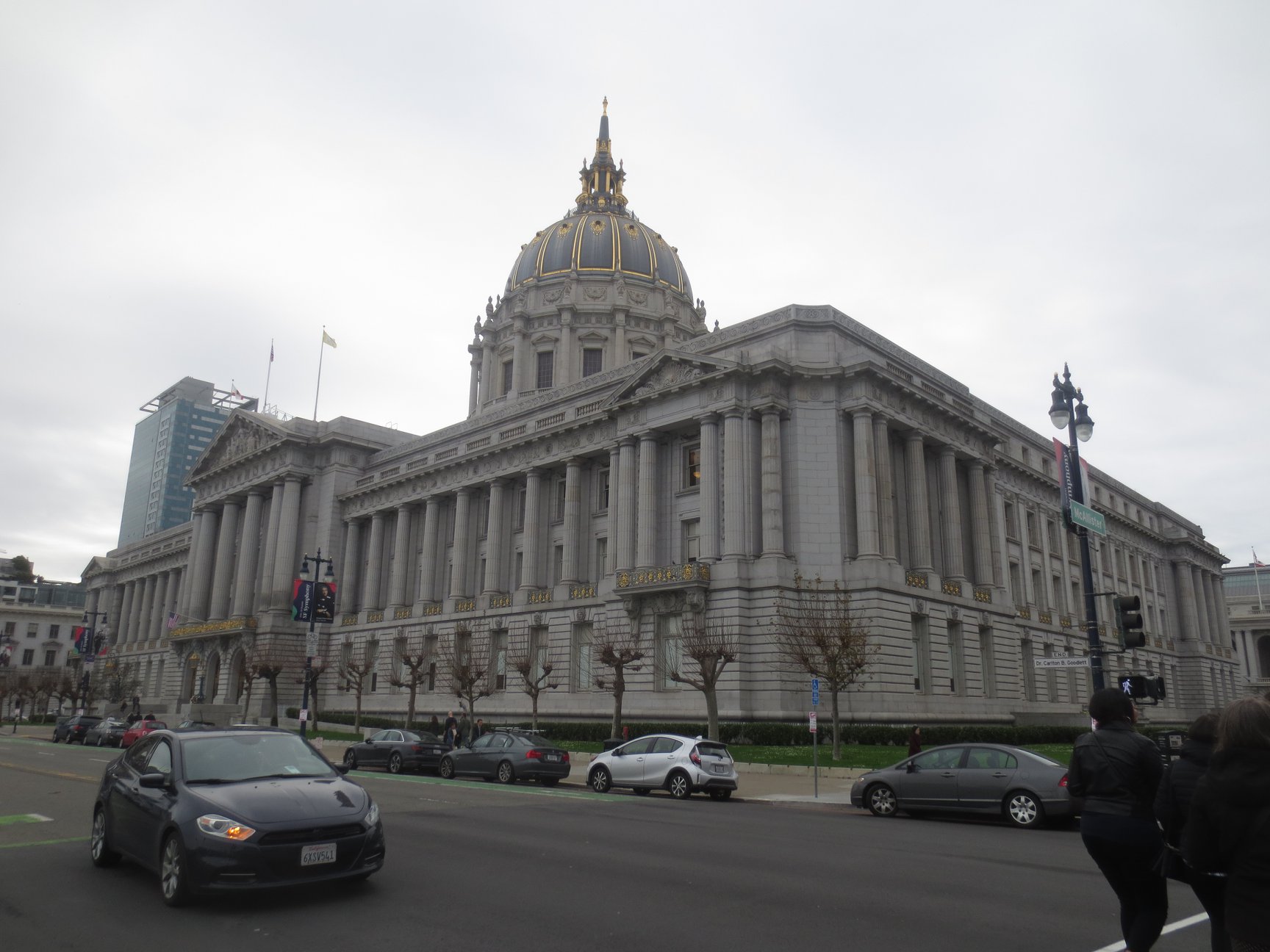
San Francisco financial district at night with the bay illuminated by the full moon. (Photo: CAN BALCIOGLU/Shutterstock)
New Report Shows San Francisco Has Worst Recovery of Any City From the Pandemic
San Francisco Downtown has 32% less foot traffic than 2019; office building vacancies at 33%
By Evan Symon, August 8, 2023 12:12 pm
According to a new study released on Tuesday, foot traffic in downtown San Francisco continued to remain at pandemic levels in recent months, showing that the city’s recovery is still a long way off.
Since the late 2010’s, San Francisco has quickly fallen from being a tech and business haven to being one of the fastest declining cities in the country. A major rise in crime, an undermanned police department, an ongoing homeless problem, a growing drug abuse epidemic, high rent costs, a high cost of living, a huge number of tech industry layoffs, and a growing vacancy crisis have all hit the city at once, with the COVID-19 pandemic only amplifying the problem in the early 2020s.
While the whole city has been affected, no area of the city has seen more of a notable decline than downtown San Francisco. Those factors, as well as higher insurance costs and more companies cutting leases due to layoffs and more workers working from home have emptied downtown San Francisco. Vacancies in office buildings are currently at about 33%, and even smaller businesses, such as restaurants catering to the downtown crowd have left due to fewer people.
Mayor London Breed and the city have tried program after program aimed at revitalizing downtown San Francisco and bringing retail back, but those efforts have either failed or only demonstrated brief short-term success.
“San Francisco has been a real problem child when in comes to post-COVID downtown recovery,” said Susan Thompson, a San Jose-based real estate advisor who specializes in leased downtown locations to the Globe Tuesday. “A lot of companies that were in San Francisco now have offices either outside the city or offer remote work. For the ones who remain, there are fewer businesses there catering to them. They have to contend with crime. Employees don’t feel safe, especially with the homeless problem in the city. Commutes are killing many because a large number of people drive or take public transportation from neighboring cities or even in cities a County or two away.”
“The city keeps trying all these incentive programs, but they aren’t tackling the main issues. People want a reasonable rent, for home or business, and they want to be safe when that happens. Looking at this from a basic needs perspective, shelter is out for most because of the cost, food is difficult because of the cost and because food stores have been pulling out, and security isn’t exactly the best.”
San Francisco downtown recovery stagnates
On Tuesday, more evidence for San Francisco’s continued decline came in through a new University of Toronto School of Cities Downtown Recovery Rankings report. According to the report, San Francisco has had the worst recovery percentage of any city from the Pandemic. When comparing unique mobile phone data across 52 cities in the U.S. and Canada, to find how many unique visitors were in the area, San Francisco only recorded 32% as much foot traffic in Spring 2023 than during the same time in 2019. Previous percentages in comparison to 2019 in 2020 through 2022 have shown similar figures as well, with the Winter 2022-2023 percentage in San Francisco also coming in with 32%, showing no recovery in San Francisco despite efforts by the city.
Other Californian cities have bounced back well. Both Bakersfield and Fresno have shown extraordinary recovery, growing above 100% recovery with more people moving to those cities from San Francisco and Los Angeles. San Diego has nearly fully recovered, with 88%, with others well on their way and climbing. These include Sacramento (75%), San Jose (74%) and Los Angeles (63%), with all either staying the same or growing from the previous quarter.
“San Francisco is just crashing now,” Thompson added. “Office space values are, according to Forbes, going to go down by as much as 40% in the next few years. That doesn’t happen in thriving cities. Along with AI firms starting to move to San Francisco, that lowered value could equate to lower rents, and we can see things even out and begin to recover. We just don’t know when that low point will be hit just yet. We don’t know where rock bottom is for the city.”
“People in the city are still trying, and like I said, the AI industry is starting to grow there and rents can become cheaper for offices. San Francisco needs to learn to go with where the market is and make things a lot better there for businesses. I’ve seen lower tax proposals there, but they aren’t doing that for a number of reasons. Far more realistic is making businesses, especially those with non-remote workers, feel more welcome and be given incentives to stay. In San Jose, part of it has been leases with bonus amenities. San Francisco just has their work cut out for them.
You can read the University of Toronto report HERE.

- Bill to Require Law Enforcement Disclosure if AI Was Used To Help Write Reports - August 7, 2025
- Gov. Newsom Files FOIA Request To ‘Expose True Cost’ Of L.A. Federal Troop Deployment for Anti-ICE Riots - August 6, 2025
- California Redistricting: How Newsom’s Plan Will Demolish Hard Fought GOP Gains - August 6, 2025





The number still seems low for San Francisco. I bet it’s closer to 50%. California has become both low quality of life and extremely high cost of living and San Francisco is the worst of the worst!!
San Fran was once cess pool of humanity. Now it’s just a cess pool.
Now it makes sense that the governor discriminates against Bakersfield and Kern County: he’s an envious narcissist. Bakersfield produces oil. He is very aware of that fact: his wine business (FatJack Swill) is financed by the Getty Oil Family who derived part of their wealth in the oil fields of Kern County. Typical bay area hypocrisy.
Does this mean SF will no longer be in the Gavin Newsom for President Video?